Forming misaligned disks through late infall

Michael Küffmeier



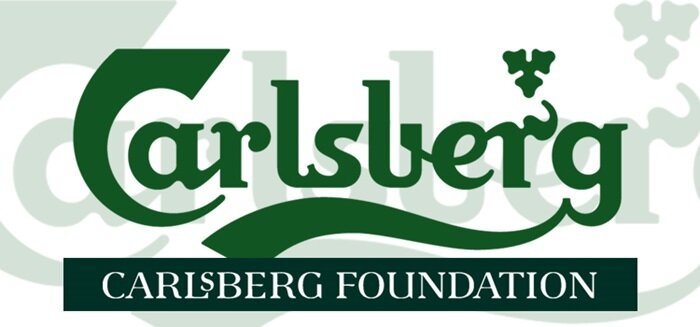
C. P. Dullemond, F. Goicovic, S. Reißl, A. Krieger

Marie-Skłodowska-Curie fellow, Carlsberg Reintegration fellow
Sequence of star, disk & planet formation
Pineda ... Küffmeier et al. 'Protostars and Planets VII'
.
.
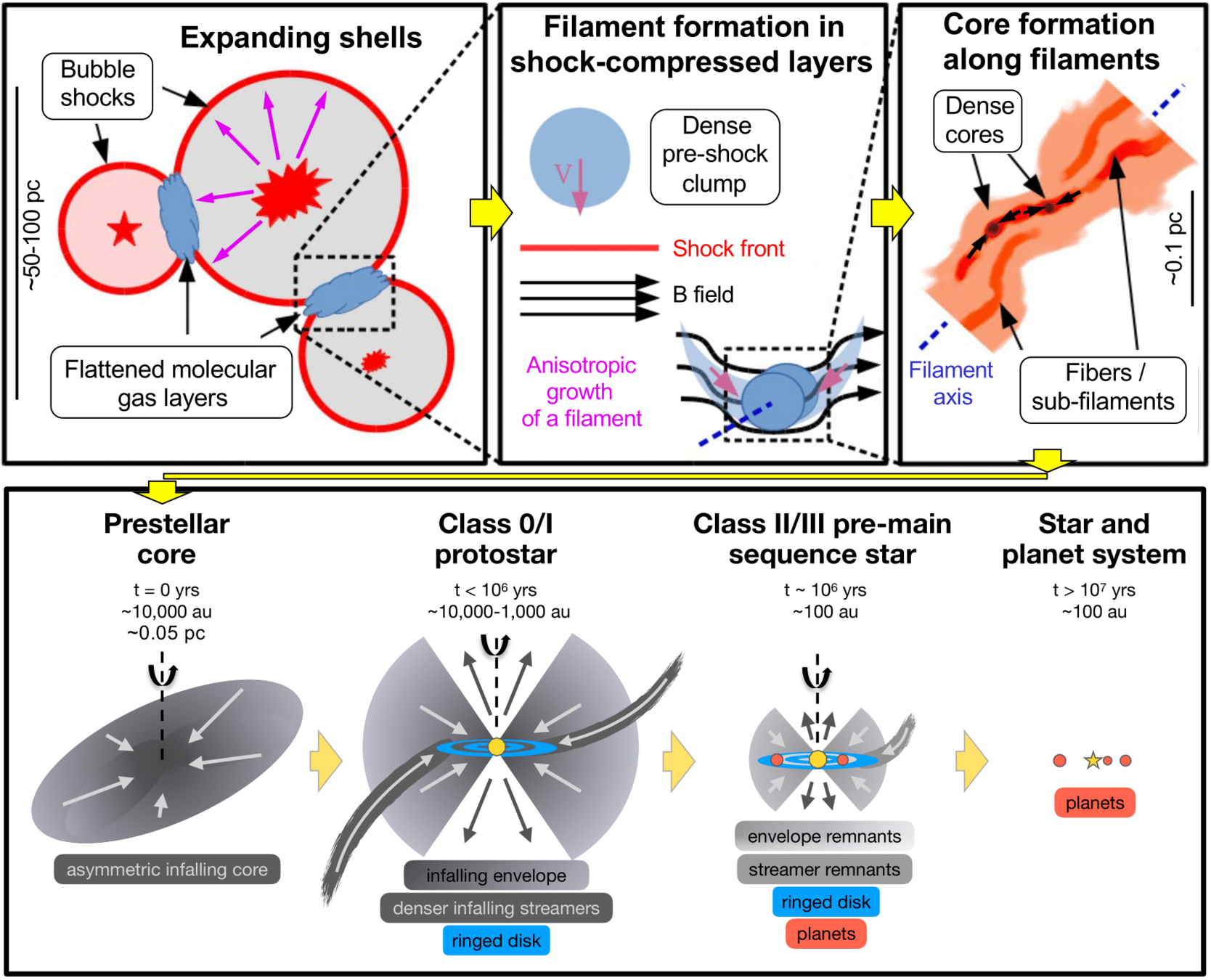
Segura-Cox et al. in prep.
Star & disk can be replenished by infall of initially unbound material
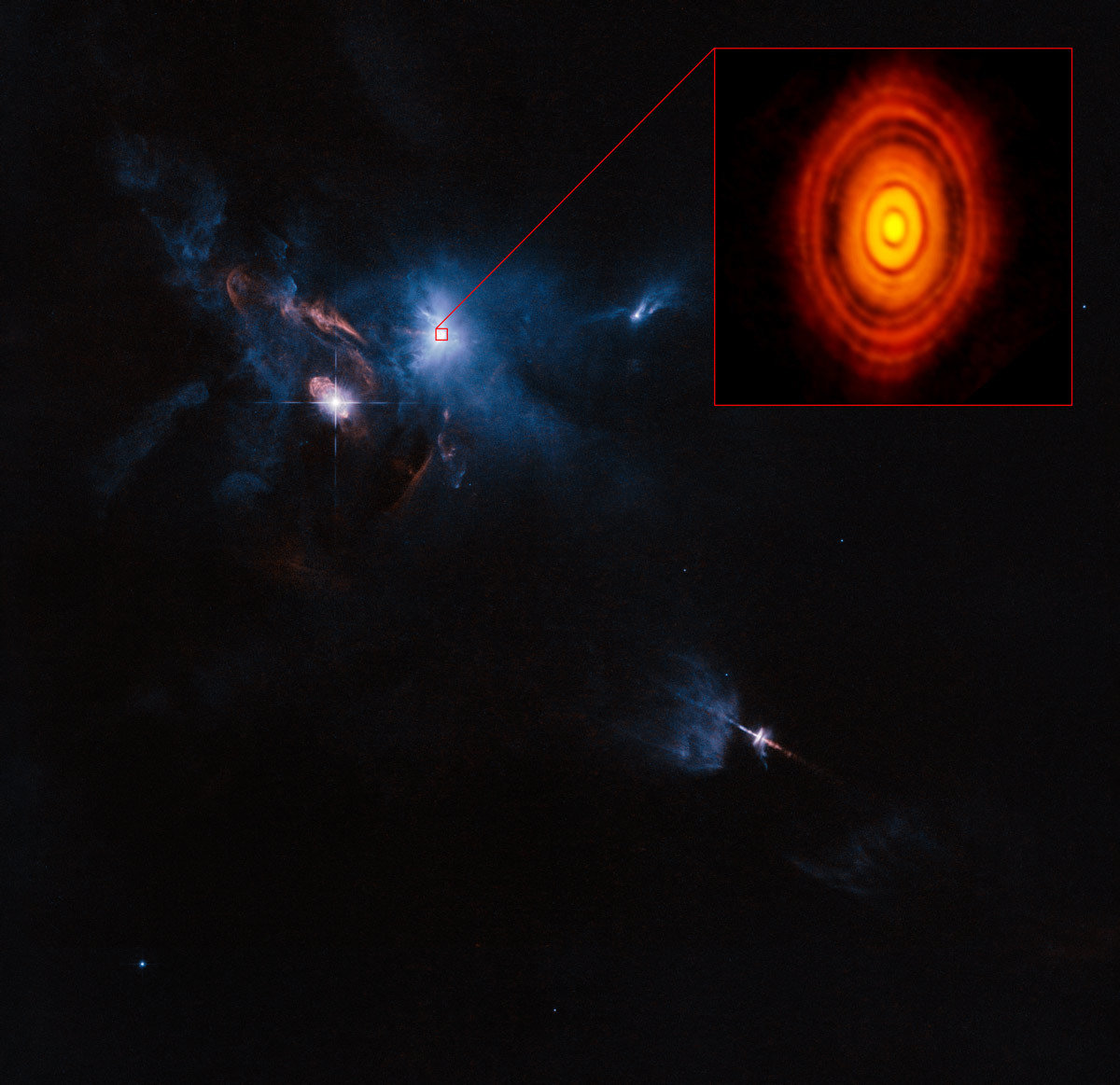
Credit: ALMA (ESO/NAOJ/NRAO)
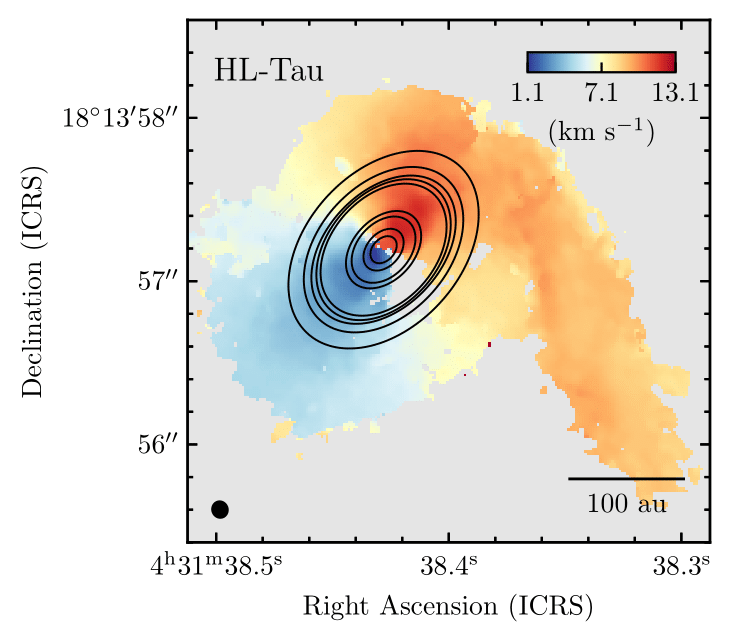
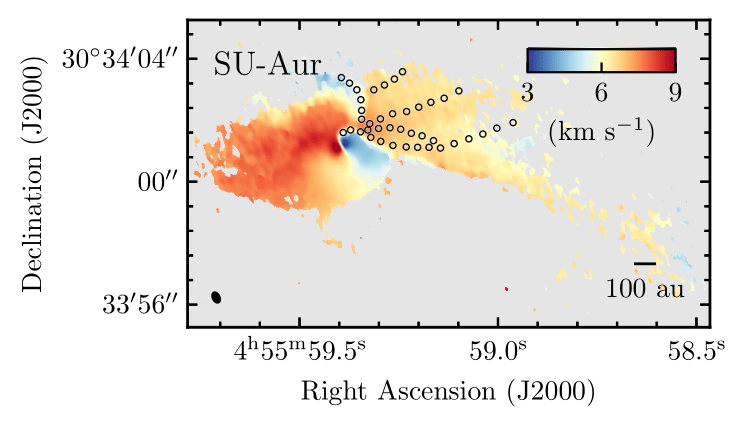
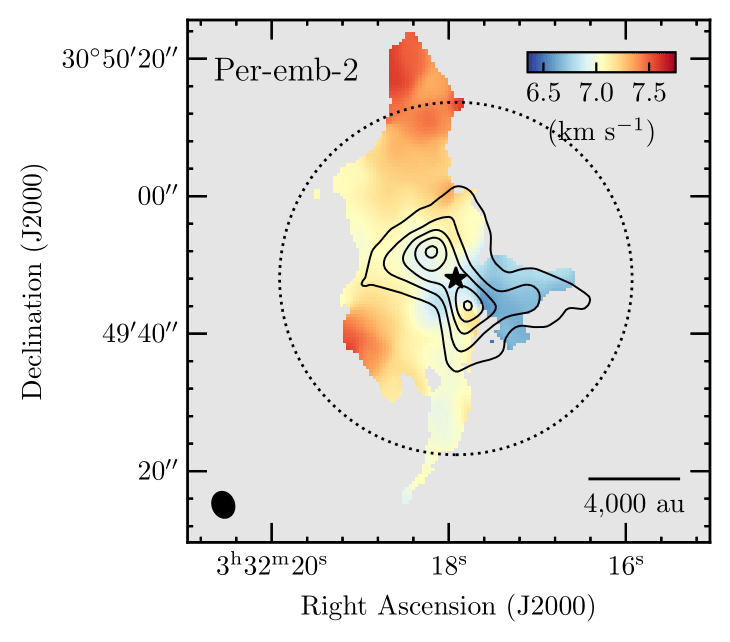
Ginski et al. 2021
Yen et al. 2019
Garufi et al. 2021
Pineda et al. 2020
50 au
BHB1 (Alves et al. 2020), GM Aur (Huang et al. 2021), IRS 63 (Segura-Cox in prep.), AB Aur (Grady et al. 1999 / Fukagawa et al. 2004), M512 Grant et al. 2021, Cacciapuoti in prep.), ...
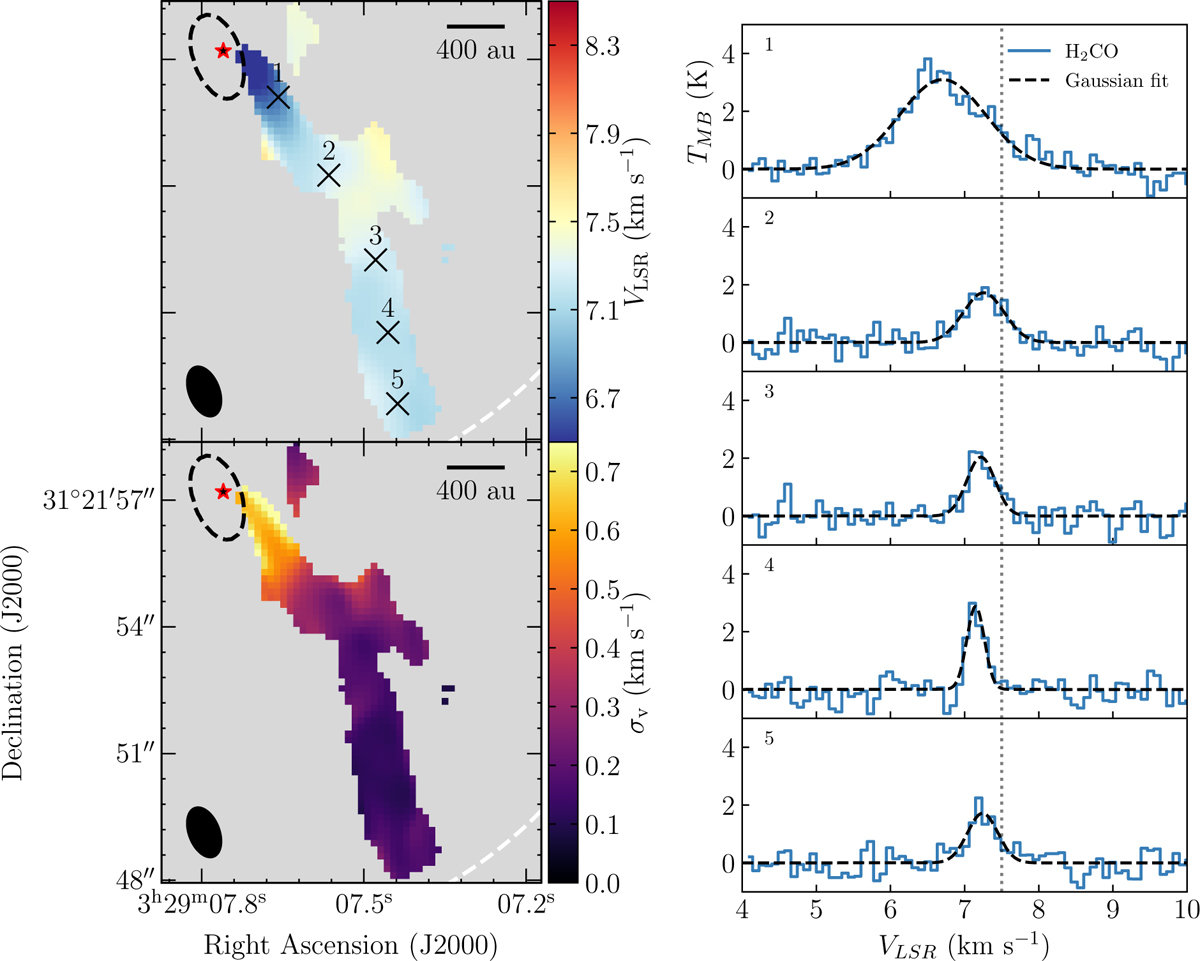
Per-emb-50
Valdivia-Mena et al. 2022
Streamers: recall A. Gupta's talk
Late infall

AB Aurigae
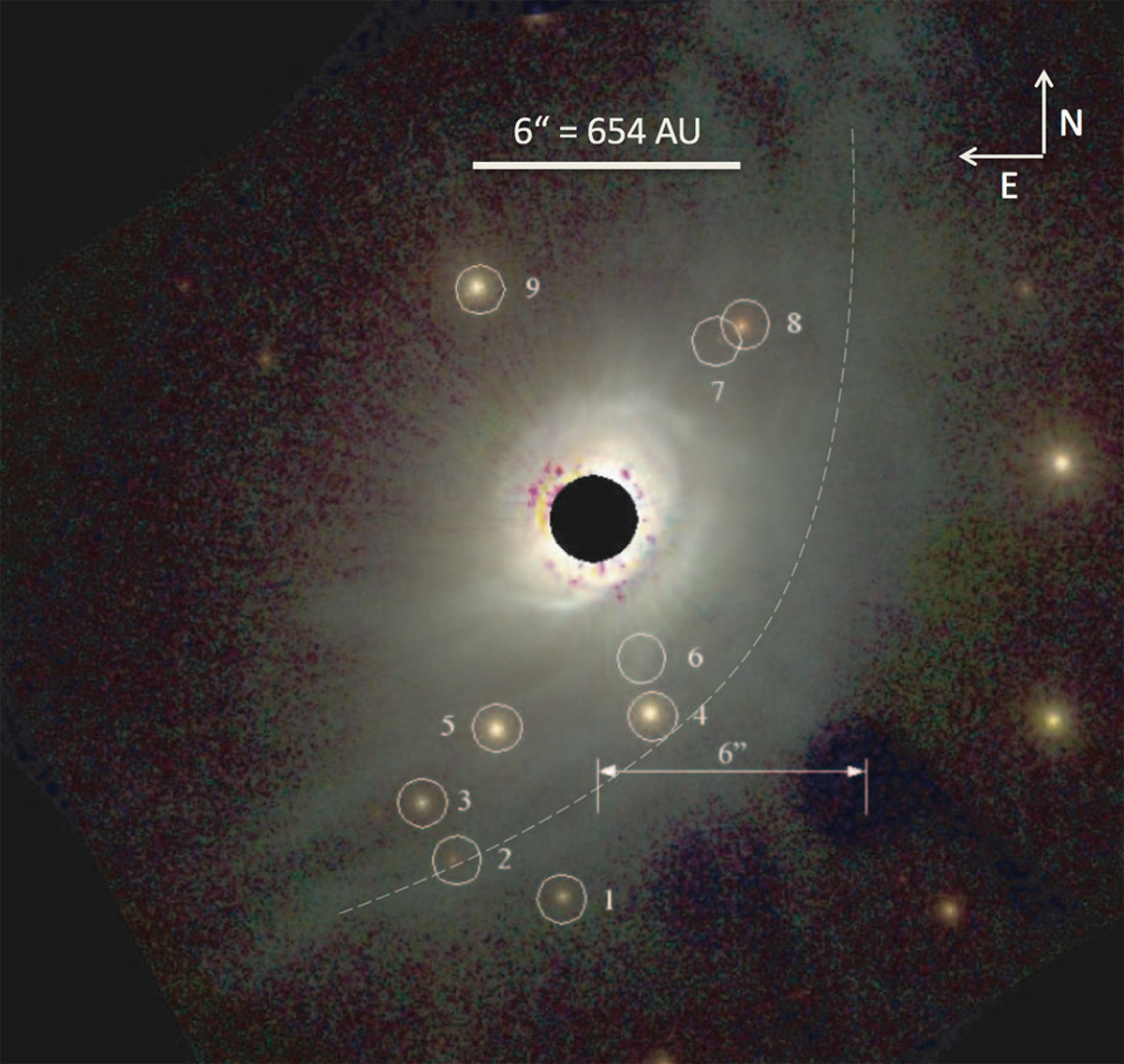
HD 100546
Credit: Grady+ 1999, Fukagawa+ 2004
Can (late) infall cause misalignment of inner and outer disk?
Credit: Ardila+ 2007

200 au
HD 142527
Credit: Avenhaus+ 2014
Extended arc-like structures can be induced by late infall
(Dullemond, Küffmeier, Goicovic+ 2019, Küffmeier, Goicovic & Dullemond 2020)
Possibility of "second-generation" disk
Shadows due to misaligned inner and outer disk
Credit: Marino+ 2015
Simulate cloudlet infall onto disk
AREPO, pure hydro
isothermal gas
vary infalling angle
vary rotation (prograde, retrograde)
Küffmeier, Dullemond, Reißl, Goicovic 2021
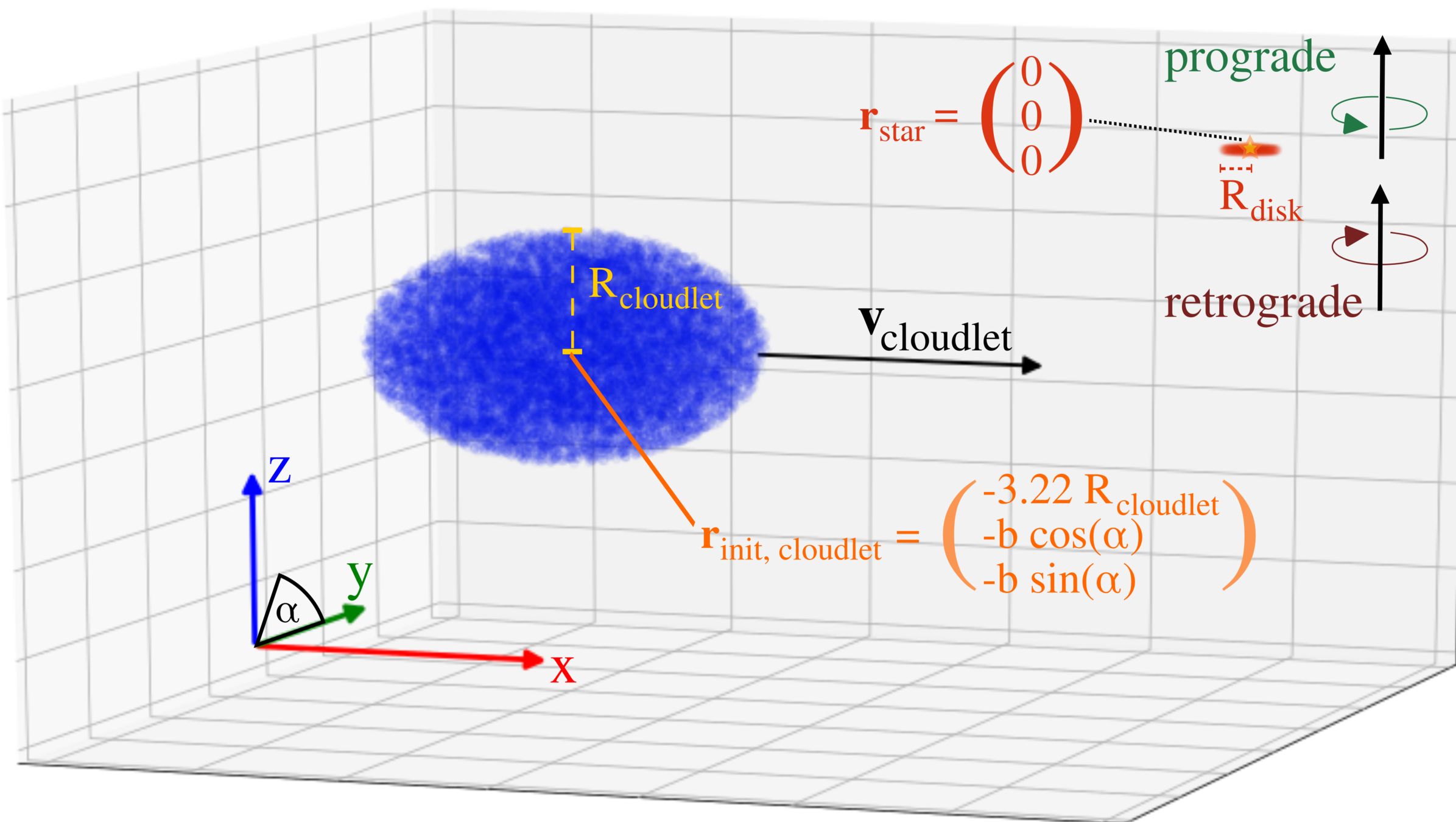
Outer disk forms around inner disk
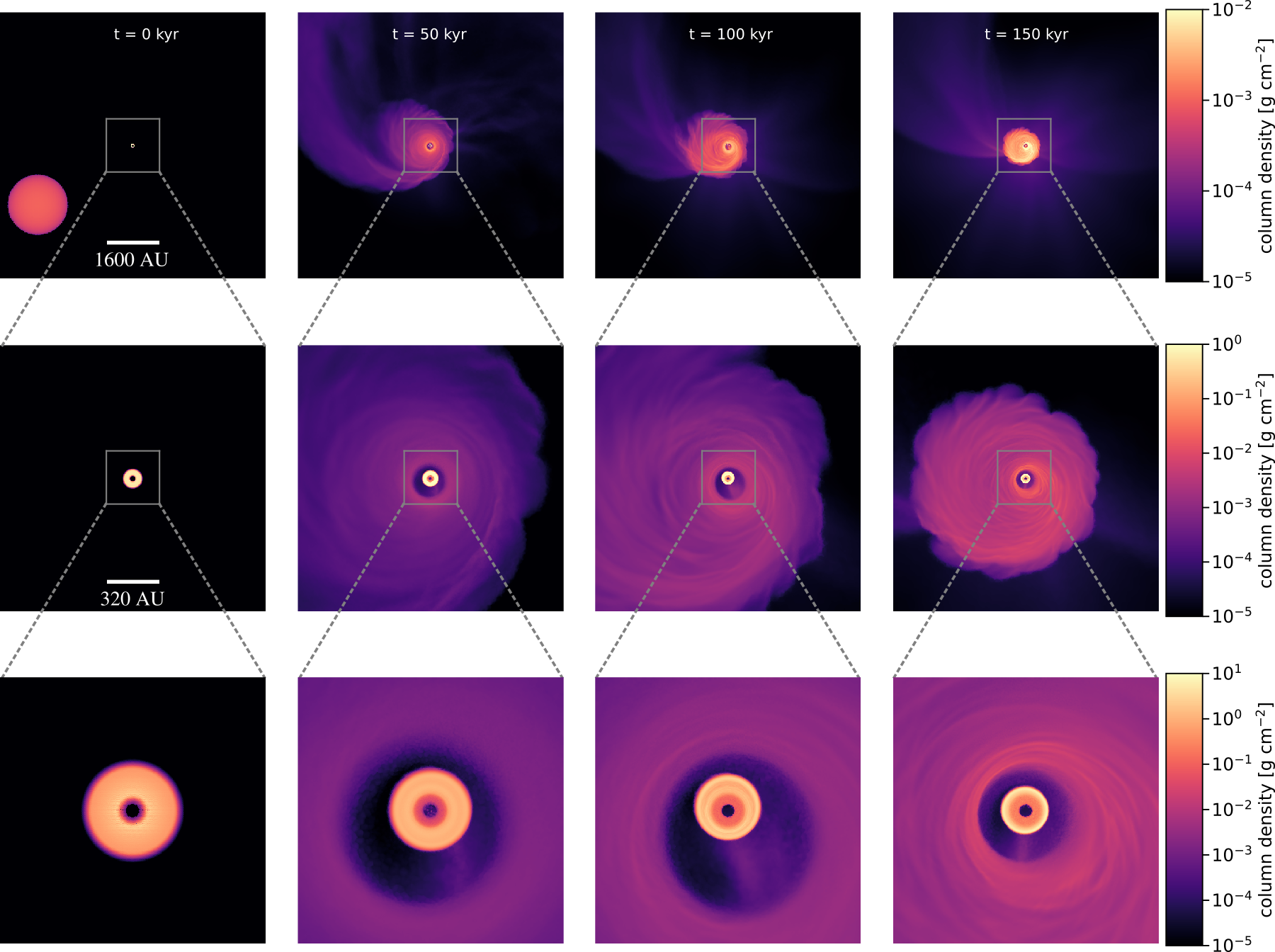
Küffmeier+ 2021
consistent with star formation simulations by Bate '18
Prograde vs. retrograde infall

Retrograde infall causes:
- counter-rotating inner and outer disk
- shrinking of inner disk
- enhanced accretion

- larger and deeper gap between disks
see also Vorobyov+ 2016
Küffmeier+ 2021
Streamers and shadows as signs of infall?
Formation of misaligned configuration
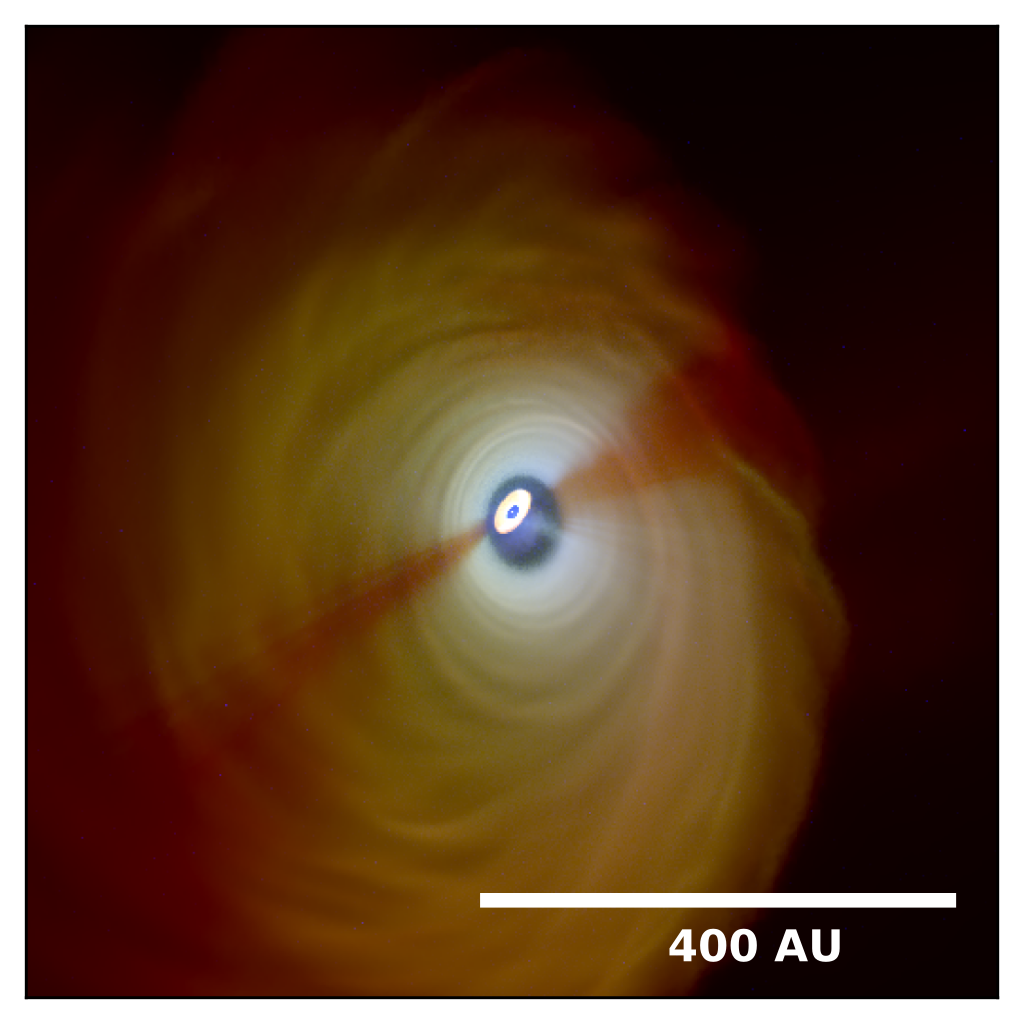
Observable as shadows in outer disk
Küffmeier, Dullemond, Reissl & Goicovic 2021
in agreement with Thies+ 2011, Bate 2018

Ginski et al. 2021 (see also Labdon et al. 2023)
300 au
(follow-up study on synthetic signatures currently in prep: Krieger, Küffmeier, Reissl et al.)
Streamers and shadows as signs of infall.
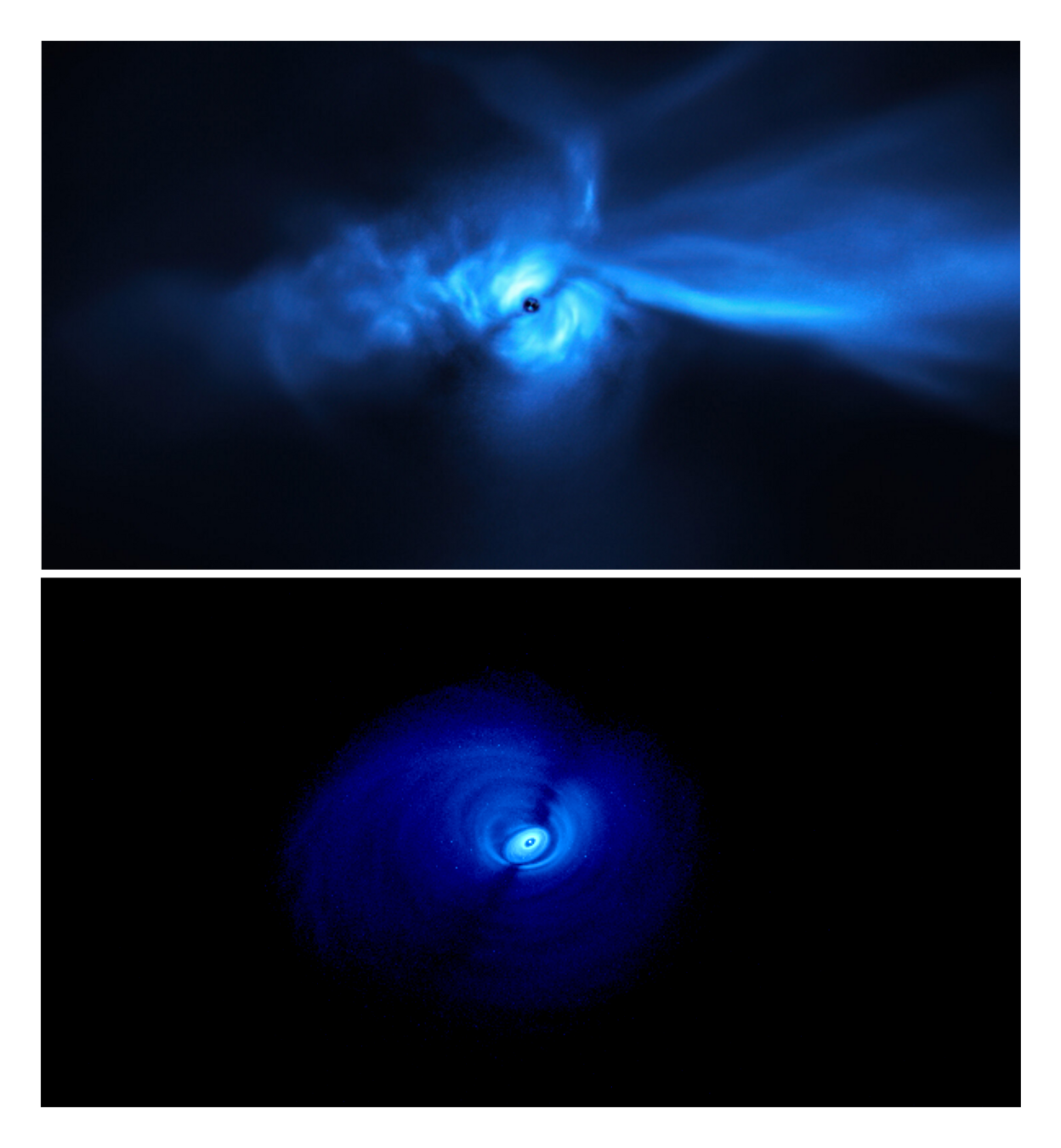
Disk evolution: eccentricity
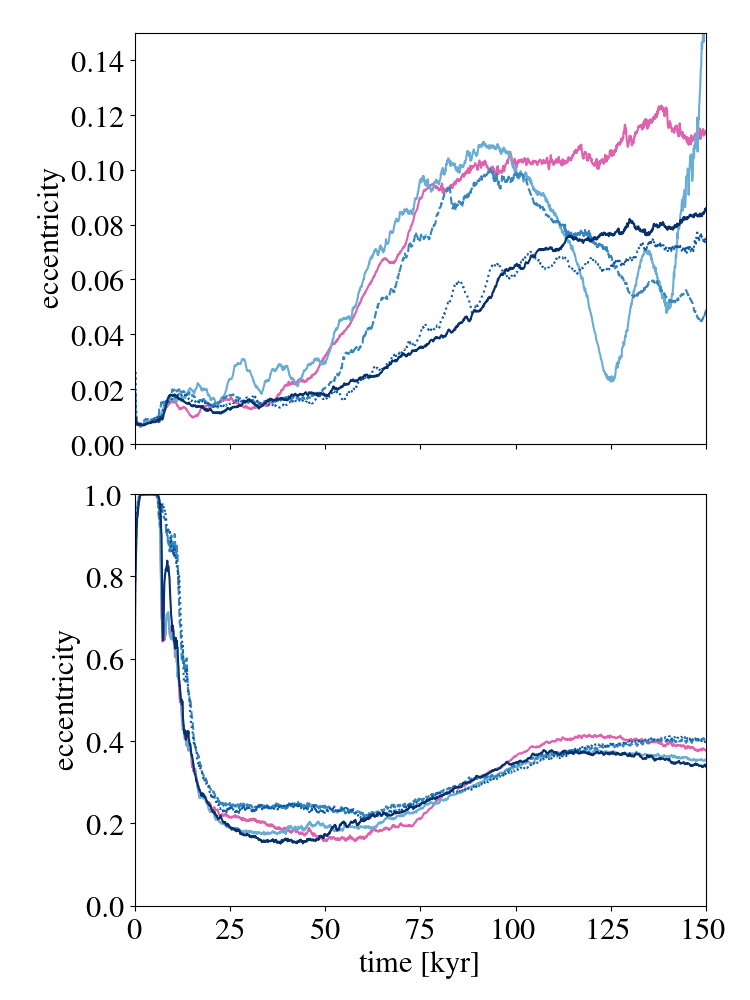
prograde, 0°
Light to dark: retrograde infall with increasing inclination
- mild eccentricity in inner disk (up to ~0.1)
inner
outer
- larger eccentricities in outer disk (0.2 to 0.4)
Infall triggers:
=> test infall scenario in CO channel maps
Küffmeier, Dullemond, Reissl & Goicovic 2021
Inner disk orientation

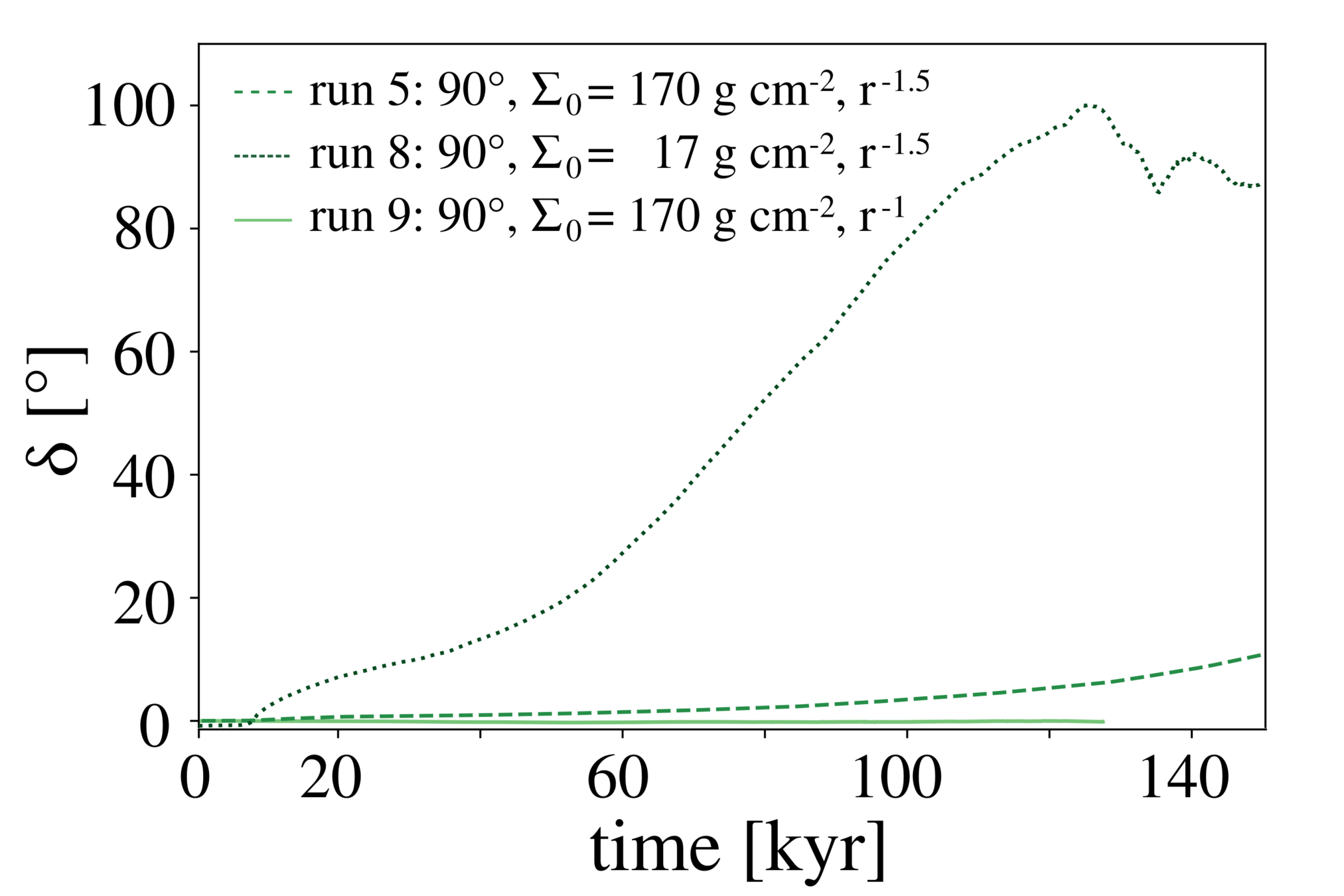
Küffmeier+ 2021
WIP: Zoom-in self-consistently on late infall

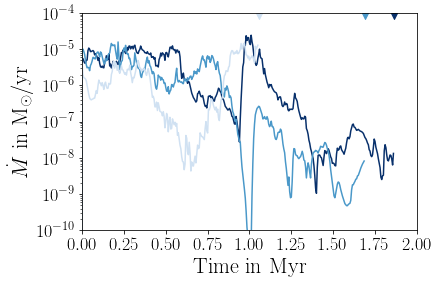
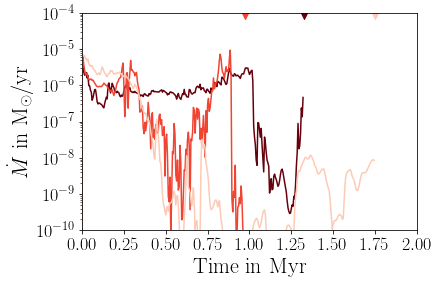
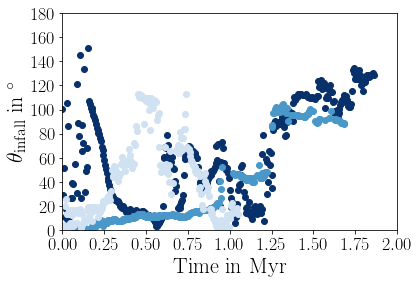
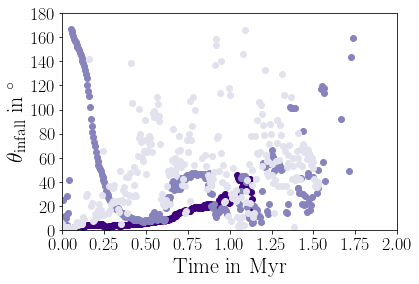

Küffmeier in prep.
Disclaimer:
We are not saying that all shadows are due to misaligned infall!
In some cases shadows have already been well explained by external companions and/or inner planets (e.g.: HD 100453 Gonzalez+ '20/Nealon+ '20 or work by Zhu '19 on planet-induced misalignment)
Infall mechanism in perspective
But we need to think outside the disk:
significant fraction of final mass might accrete late through inflow (Küffmeier+ 2023, Pelkonen+ 2020)
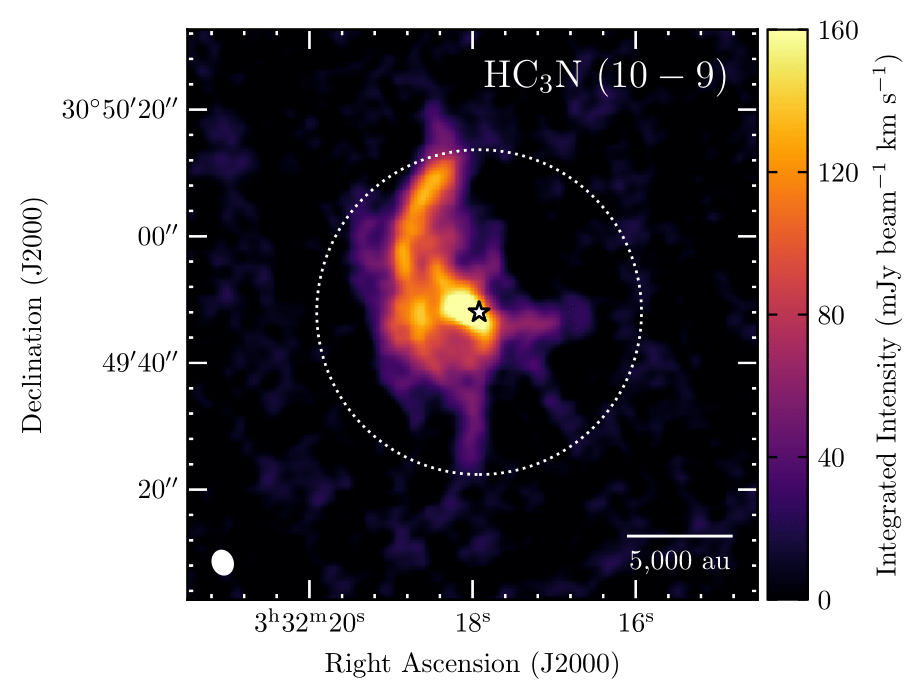
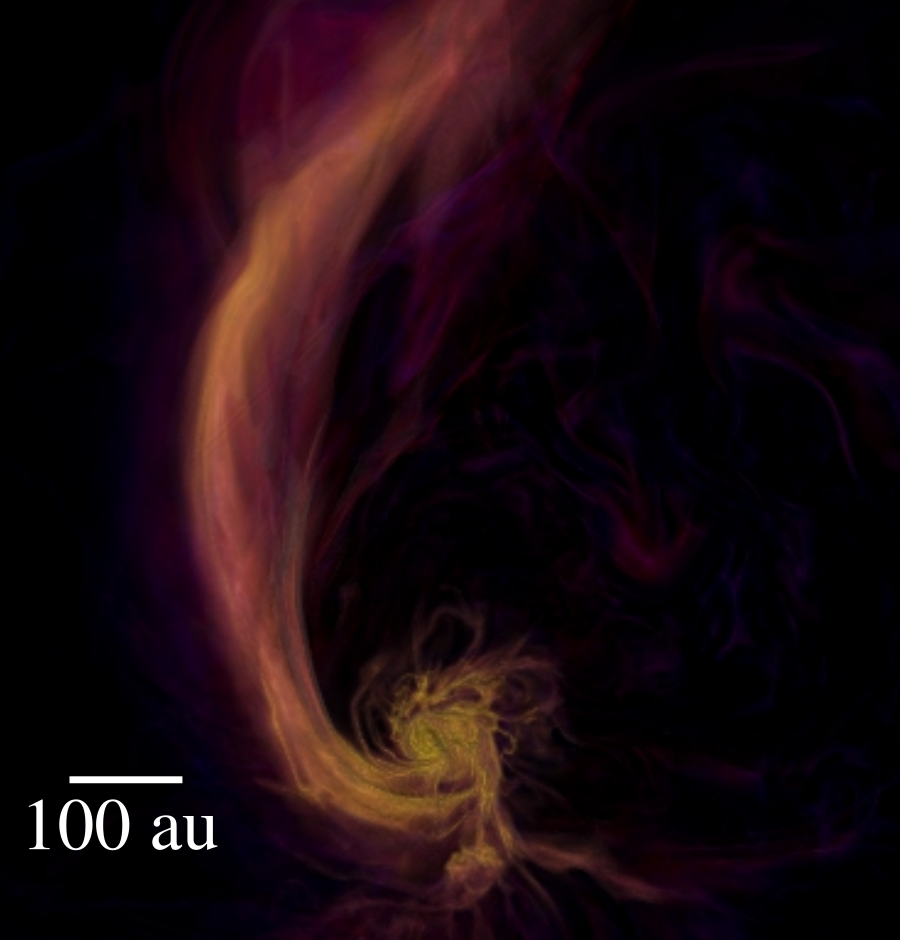
Pineda et al. 2020; see also [BHB2007] 1 (Alves et al. 2020)
Küffmeier et al. 2019
binaries/fly-bys (see review by Cuello+ 2023 and references therein)
environmental effects (Cathie's talk): photoevaporation (e.g., Haworth+2020), cosmic-rays (e.g., Küffmeier+ 2020), ...
Take-away points
The young outer disk is expected to have higher eccentricity than the old inner disk.

Retrograde infall can cause counter-rotating disks, shrinking of inner disk, formation of gaps (>10 AU) and enhanced accretion.
WIP: zoom-in simulations to self-consistently account for late infall onto star-disk systems

On average, stars with final masses of more than 1 solar mass accrete >50 % of their mass after 500 kyr
Küffmeier, Jensen & Haugbølle '23
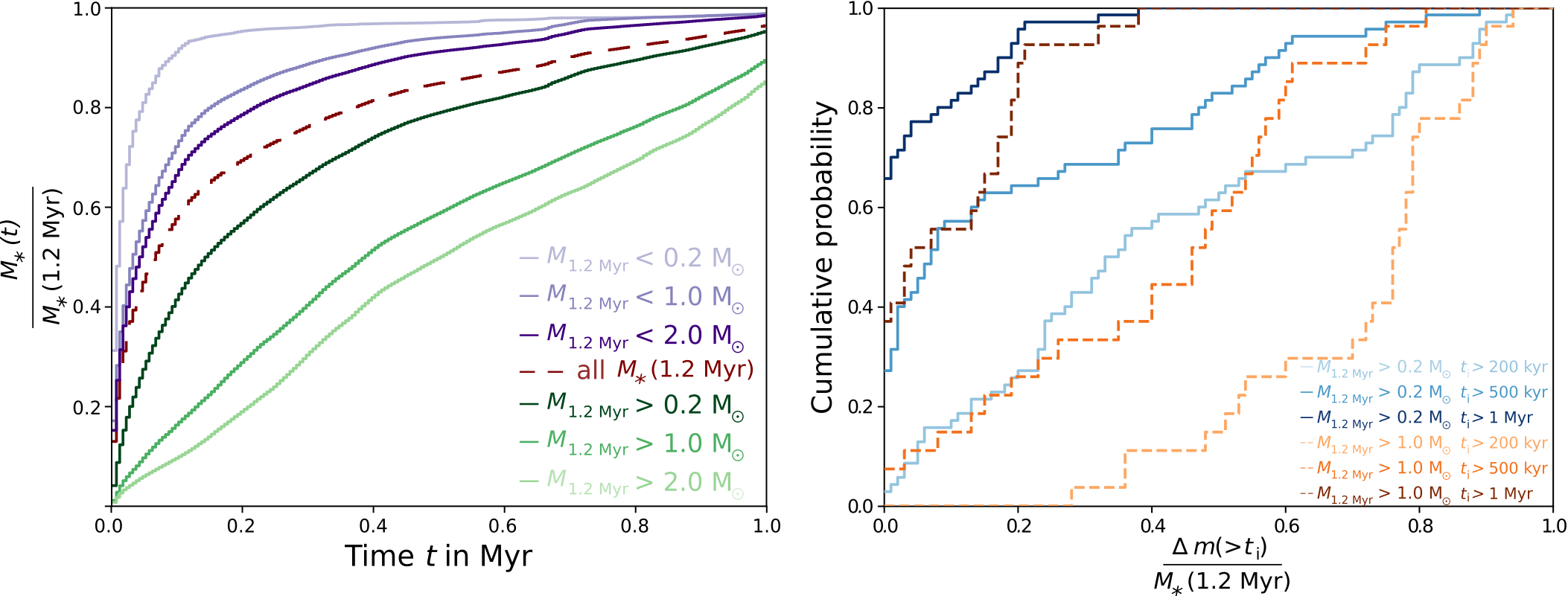
Heterogeneous accretion implies late infall
Observational indication: luminosity bursts
(PPVII review by Fischer et al. 2023)

Zoom-in on embedded stars

Küffmeier et al.
2019
Küffmeier et al. 2018
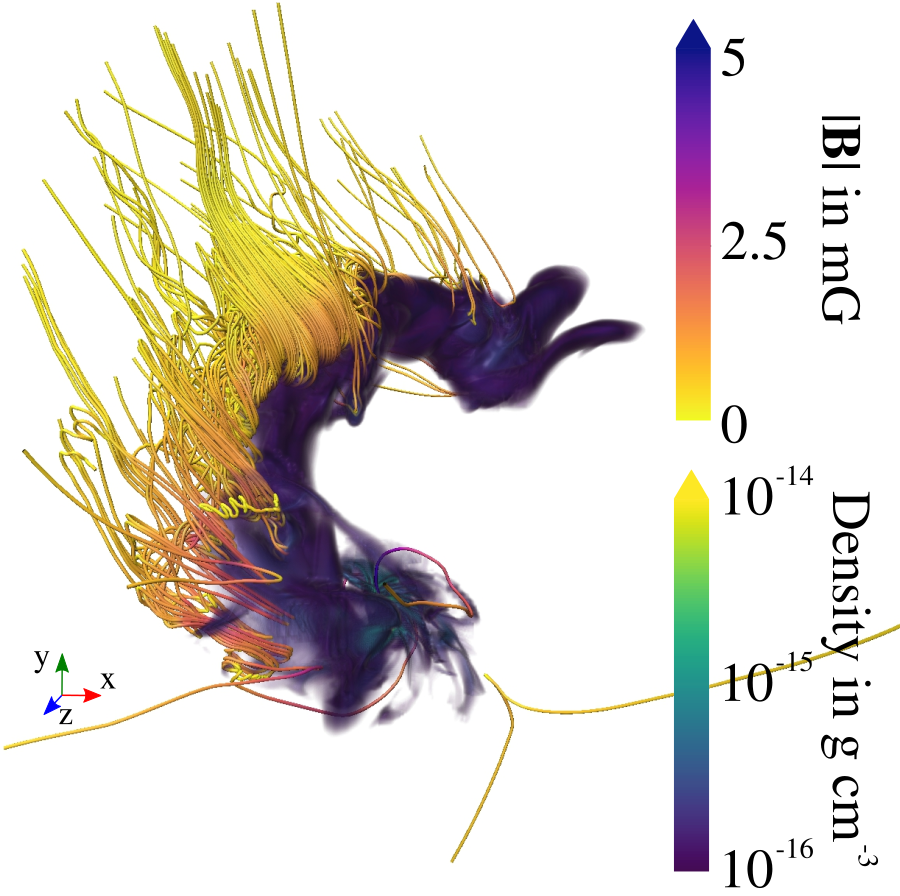
Küffmeier, Reißl et al. 2020
bridge structure similar to IRAS 16293--2422 (e.g. Sadavoy+ 2018, van der Wiel+ 2019, Maureira+ 2020)
~1500 AU
realistic initial conditions!
WIP: study synthetic observations of infall-induced shadows

RGB image of misaligned system forming from infall with 60°
blue (1.66 micron), green (53 micron), red (870 micron); Credit: S. Reißl
Effect of infall angle on disk
Formation of misaligned configuration

Observable as shadows in outer disk
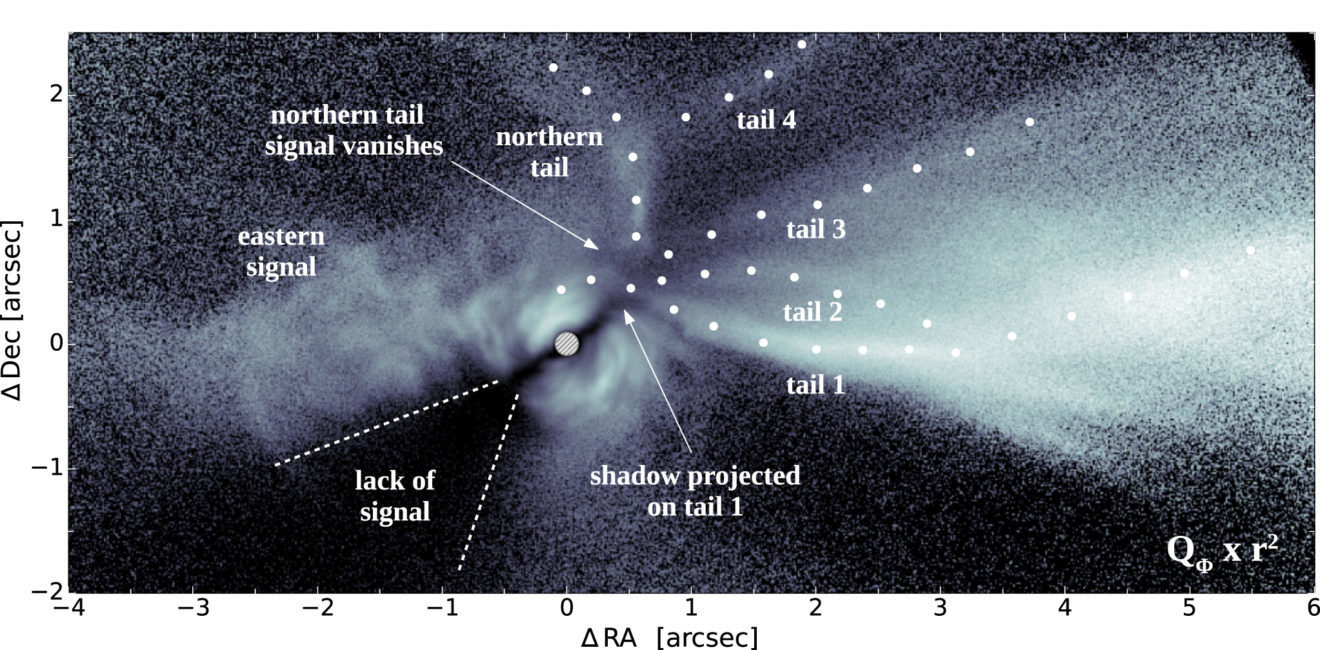
Ginski et al. 2021
EAS2023 S13d: Forming misaligned disks through late infall
By kuffmeier
EAS2023 S13d: Forming misaligned disks through late infall
- 225



